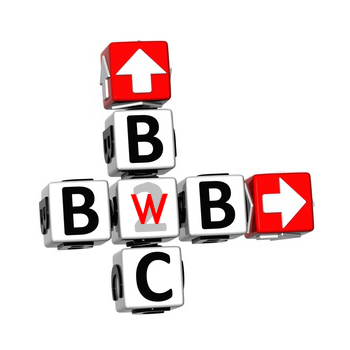

Who knows your business as well (if not better) than you do? The people who work in your business, of course! And I’m not talking about a sales staff. I’m talking about your nuts-and-bolts employees who know the everyday ins and outs, whether they work with your customers, handle inventory or do the behind-the-scenes work that helps run your company. In today’s socially-connected world, employees are often an untapped resource that (with a little guidance) could exponentially expand your company’s word-of-mouth reach. Empower them so they can power your business.
Your employees can use these four social platforms to help spread the word about your company:
1. LinkedIn
Especially if your company is B2B, have a company profile on LinkedIn, and encourage all employees to have personal profiles that link them to your company. Each person has talents and skills they contribute to your business that could be highlighted with your company’s keywords in each employee’s summary and experience areas. LinkedIn Recommendations can also increase your company’s visibility in the channel.
Ask employees to join groups where they can share their insights and answer questions.
2. Facebook
If you have a business page on Facebook, have employees link to it in the “About” section of their profiles. Also, set up a private group where your employees can collaborate. Seek out groups that fit your company niche and encourage employees to join; not to SPAM others with your messaging, but to find ways to contribute, answer questions, share expertise, etc.
3. Twitter
Twitter is a great place to provide an extra level of customer service that goes beyond your own company brand on Twitter. People-to-people interaction gives your brand a more human touch. Each person can actively “listen” for company mentions, questions and conversation around keywords and jump into the conversation where appropriate—even if it’s just to thank someone for mentioning or Retweeting your brand. Encourage employees to share Tweets around your company’s activities and content. Come up with a company hashtag or a series of hashtags (e.g. #companyname, #companyevent) and pre-craft Tweets to make it easy. They can just cut and paste to share on their Twitter feed.
4. Instagram
Even if you don’t have a photogenic product, your employees with smartphones can still spread positive messaging about your company with Instagram. From photos of the lunchroom, to customer gatherings to company events, there are many ways your employees can pull in prospects with images.
Hashtags can now be used and tracked on all four of these platforms.
A little encouragement goes a long way!
Set some formal guidelines, keeping in mind that if you clamp down too hard, employees may back away from participating. Offer in-house social training, led by your best in-house and local experts. Provide incentive programs to reward the employees who provide the most relevant ideas and responses.
Remember that your employees are your company’s best resource—make the most of their passion and individuality. They’re already social, so start thinking of how you can empower your employees to have their own voice, and you will discover many can and will become your company’s most active and valuable social advocates.
Originally published October 2, 2013 at salesforce Blog


 Social adoption rates are rocketing and the impact of social networking within society continues to grow. But surprisingly enough, there are many in the business to business marketing sphere who still don’t “get” it. With this in mind I recently put together a fast moving and to the point keynote presentation to open the eyes of B2B salesforces and socially energize them!
Social adoption rates are rocketing and the impact of social networking within society continues to grow. But surprisingly enough, there are many in the business to business marketing sphere who still don’t “get” it. With this in mind I recently put together a fast moving and to the point keynote presentation to open the eyes of B2B salesforces and socially energize them!
 B2B customers have become more independent buyers in the procurement process as a result of their increasing access to information, research and peer-recommendations. In fact, this modern buyer is something of an enigma to B2B vendors. Traditional lead generation efforts such as trade show and publication advertising, direct mail, email, etc. are decreasing in effectiveness. Lead generation through social marketing has received much hype yet case studies demonstrating real bottom-line impact are still few and far between. How does one capture their attention (and wallet-share) in an environment where competition has surpassed competitive vendors to include the increasing availability of information and perception driven by customers and non-customers alike?
B2B customers have become more independent buyers in the procurement process as a result of their increasing access to information, research and peer-recommendations. In fact, this modern buyer is something of an enigma to B2B vendors. Traditional lead generation efforts such as trade show and publication advertising, direct mail, email, etc. are decreasing in effectiveness. Lead generation through social marketing has received much hype yet case studies demonstrating real bottom-line impact are still few and far between. How does one capture their attention (and wallet-share) in an environment where competition has surpassed competitive vendors to include the increasing availability of information and perception driven by customers and non-customers alike?

 The purpose of this post isn’t to argue the merits of inbound marketing with creative content. I believe that any B2B marketing professional still debating against that is probably not open to the points I want to make.
The purpose of this post isn’t to argue the merits of inbound marketing with creative content. I believe that any B2B marketing professional still debating against that is probably not open to the points I want to make.